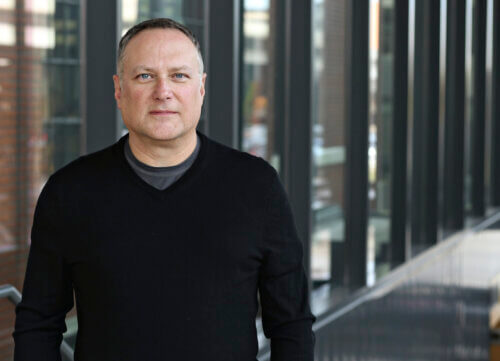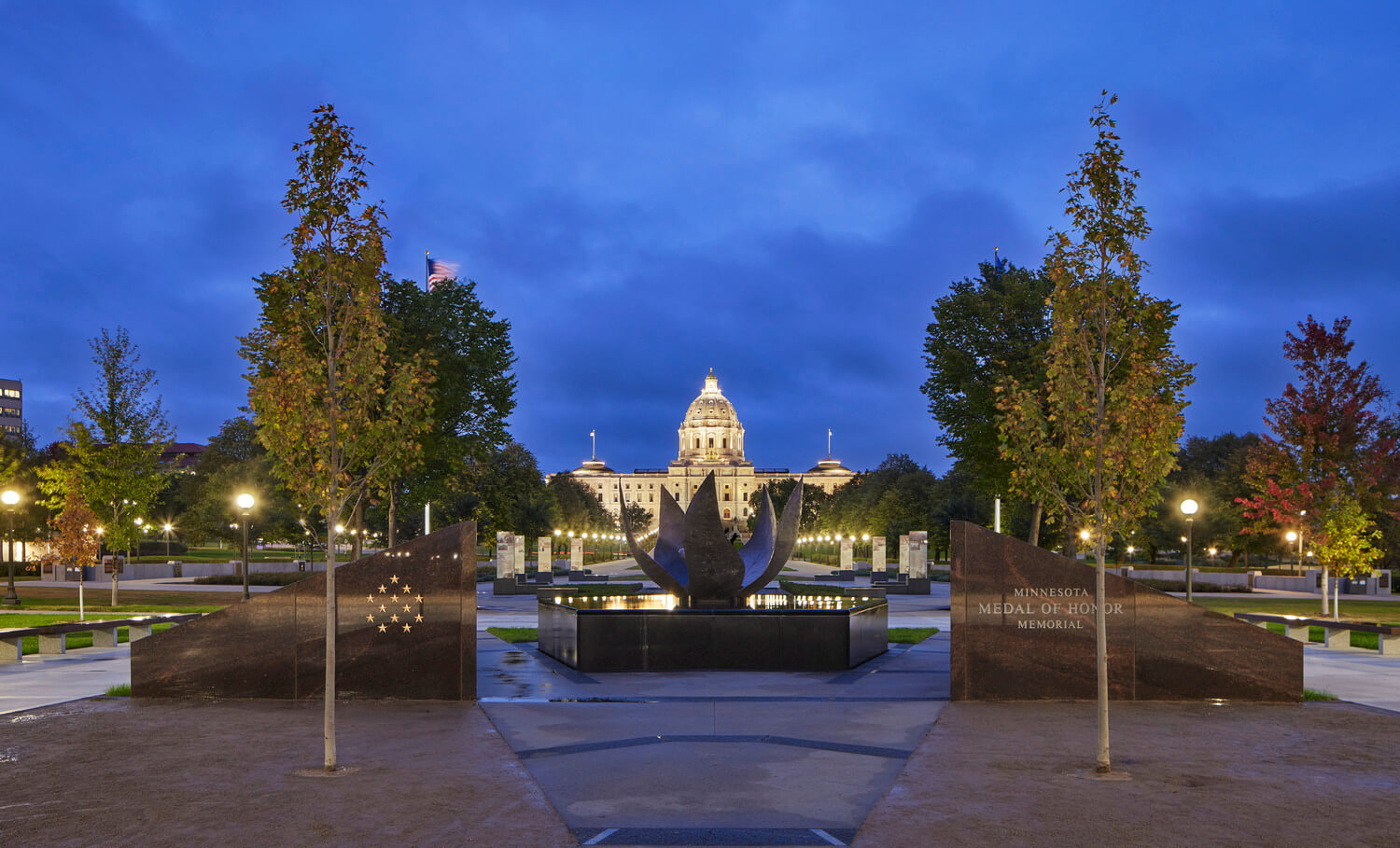
Throughout his career as a landscape architect and Landscape Architecture Department Leader at HGA, Theodore Lee, FASLA, SITES AP, LEED AP, has focused on designing enduring landscapes that reflect a sense of history, context, and detail.
Among his renowned landscapes are the Minnesota State Capitol Campus Renovation, Minnesota Military Family Tribute, and Minnesota Medal of Honor Memorial on the State Capitol Mall. His work also includes landscapes for a range of clients, including public institutions, government agencies, corporations, universities, and hospitals.
In recognition of his accomplishments, Ted recently was elected to the American Society of Landscape Architects (ASLA) Council of Fellows, joining a prestigious group of professionals nationally. In the following, he discusses his passion for natural environments and landscapes as a source for storytelling.
Congratulations on your election to ASLA Fellow. What was your first thought when you received the news?
I was at our family cabin in northern Minnesota fishing when I got a call from the ASLA President. I paused for a second when I heard the news and then told her that she just made a perfect day even better. We talked for nearly half an hour about this wonderful achievement as I sat in a boat fishing with my family in the middle of Lake Vermilion.
What was your family’s reaction?
They were certainly curious about who I had been talking with for so long. When I told them, we celebrated on the boat and later with a toast. This is a career pinnacle; a capstone and it was a fantastic way to hear the news. I was doing what Minnesotans do best—go up north to the cabin.
Looking at this as a capstone, do you have a common theme that defines your work?
Some landscape architects have a signature theme, but I don’t see design that way. I like to think about design as contextual to each site. I ask, how does the existing context inform the design? There’s a saying called genius loci—and I believe that design should stem from the spirit of a place.
How do you explore this genius loci?
When I first visit a site, I try to get a feel for what things are like and what the human response is to that place. I can use that genius loci to help shape a landscape concept based on the preexisting conditions and the history of the site.
As landscape architects, we see ourselves as architects of the land. While an architect or interior designer will use certain materials to create a space, we use trees, plants, stone, and earth to express the site design and derive design from its context.
So, you approach it as a contextual process?
Landscape design is dynamic—it is continuously changing because plants, wildlife, human interaction, weather, and new development are constantly at play. When designing with trees and other plant materials, we need to consider what they will look like in the future, 50 to 100 years from now and how that will change over time in the landscape.
So, are you looking long term?
I always try to envision how the evolving context will influence human response today and years out. Unfortunately, a lot of designs are temporal. They don’t last as long as we would hope.
But some landscapes are long-term?
The Military Family Tribute and Medal of Honor Memorial on the Minnesota State Capitol Mall are part of the fabric of our culture—our narrative. They will continue to tell a story for future generations. And the State Capitol will be there another 100 years. It was exciting to be part of those projects and contribute to the state’s narrative legacy.
Those two memorials hold special meaning for you. Can you tell us about that?
The Military Family Tribute and the Medal of Honor Memorial both came about through competitions that we won unanimously. The Military Family Tribute, in fact, was one of the first in the country specifically to pay tribute to the family, so it was an honor to be part of that. I am also proud to have led talented teams of professionals who collaborated in the creation of these enduring places.
But to the point, both are important personally because my oldest son was serving in the U.S. Army and deployed to Iraq at the time these projects were being designed and built, so it was an emotional time for my family and me. I also have many other family members who have served in the military through generations. It is personally rewarding to know that these designs will endure on the Capitol Mall for a long time to honor the people and families who have given so much.
Do you see your work as storytelling?
One thing we do as landscape architects is to weave stories into our designs. The success of a landscape is how well it engages the visitor. It goes back to the spirit of place. I try to capture that spirit to inspire people and touch their emotions in some way.
Join Ted on a site tour . . .
Ted Lee will serve as tour guide for “Artscape! The Minneapolis Sculpture Garden & Wurtele Upper Gardens at the Walker Art Center” at the ASLA Conference on Landscape Architecture in Minneapolis, October 27 – 30, 2023.




